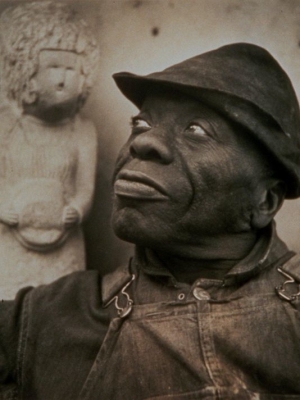|
Displaying items by tag: carvings
In the mid-1500s, European merchant ships, loaded with treasures from Asia, began arriving in the port city of Acapulco. The cargo of Japanese lacquerware, Chinese porcelains and ivory carvings from India and the Philippines was bound for Europe. But along the way, many of the objects found their way to markets in Mexico City. Similar stories played out in port cities from Rio de Janeiro to Boston, transforming the Americas into a nexus of global trade and leaving an indelible impact on local art.
To explore the influence of Asian craftsmanship on the art of the early Americas, the Museum of Fine Arts, Boston is hosting “Made in the Americas: The New World Discovers Asia.”
Collecting scrimshaw is a dicey hobby, given the prevalence of forgeries in the field — plastic resin copies are known as fakeshaw.
The welding supply magnate Thomas Mittler, who died in 2010 at 67, bought whale bone and tooth carvings with the guidance of scholars and dealers, including Nina Hellman, who owns a marine antiques store on Nantucket. Her new book, “Through the Eyes of a Collector: The Scrimshaw Collection of Thomas Mittler,” was published by Charlotte Mittler, the widow of Mr. Mittler; he had long planned to commission a publication about his hundreds of acquisitions.

About seven years ago, an enlightened group of councilmen, business people and local supporters of the arts began efforts to transform a strip of wasteland along this city's Charlotte Avenue into a public amenity. On Aug. 20, after much community engagement, including "Design Your Neighborhood" workshops for young interns, Nashville's mayor Karl Dean dedicated the revitalized Edmondson Park. The once neglected site is now Nashville's first "art park"—a neatly fenced, tree-studded, undulating field of Bermuda grass with a walking path and a children's area, with a sophisticated "green" water-capture system, that forms a handsome backyard for a row of modest, attractive clapboard houses that bear witness to the city's ambitious urban redevelopment program. As a fitting tribute, during the 60th anniversary of the civil-rights movement, the park is named for William Edmondson (1874-1951), the city's celebrated self-taught sculptor, the son of former slaves, who lived nearby. Edmondson, who said that his carvings of figures and animals were divinely inspired, was the first African-American to have a solo show at New York's Museum of Modern Art, in 1937.

On January 25, Sotheby’s held the auction ‘Visual Grace: Important American Folk Art from the collection of Ralph O. Esmerian’ in New York. The sale, which included over 208 lots ranging from watercolors, portraits, pottery, furniture and weathervanes to carvings, needlework, sculpture and scrimshaw, fetched $12,955,943, significantly exceeding its pre-sale estimate of $9.5 million. The sale set a new record total for any auction of American folk art.
The top lot of the auction was a carved figure of Santa Claus by wood carver Samuel Robb, which sold for $875,000, far surpassing its pre-sale estimate of $250,000. Other important sales included Ruth Whittier Shute and Samuel Addison Shute’s portrait of Jeremiah H. Emerson, which brought $665,000; a rare carved pine pheasant hen weathervane from the late 19th century, which sold for $449,000; and ‘The Carver Limner,’ a painting depicting three members of Freeport’s Carver family, which fetched $521,000.
Esmerian, the former chairman emeritus of New York’s American Folk Art Museum, is currently serving a six-year sentence for fraud. The sale at Sotheby’s was ordered by the U.S. Bankruptcy Court and generated $10.5 million for Esmerian’s creditors including Sotheby’s and Christie’s.
A Chinese bowl dating back to the Northern Song Dynasty (960-1127) sold for $2.2 million on March 19, 2013 at Sotheby’s in New York. London dealer Giuseppe Eskenazi bought the bowl at the auction of Chinese ceramics and other works of art. The piece soared past its estimate of $200,000 to $300,000. The sellers were a New York-based family that purchased the bowl at a garage sale in 2007 for three dollars.
The bowl, which measures 5 inches in diameter, is an example of the rare “Ding” ware, which is known for its thin potting and ivory color. The bowl features interior and exterior carvings as well as ivory-hued glaze. Only one other bowl of the same form and size is known and it is part of the British Museum’s collection in London.
David Hausman, a New York City antiques dealer, was sentenced to 6 months in prison for illegally purchasing rhinoceros horns. The federal court also hit Hausman with a $28,000 fine for breaking laws intended to protect endangered black rhinos.
Hausman was arrested and pleaded guilty in court last summer, admitting that he knew the horns needed to be more than 100 years old in order to be purchased legally. Hausman, whose arrest was part of a nationwide crackdown, had previously offered to help the U.S. Fish & Wildlife Service fight the illegal sales of rhinoceros horn.
Rhinoceros horn carvings, which are believed to bring good luck and health, have left the world’s rhino population devastated.
A major exhibition titled Ice Age Art: Arrival of the Modern Mind is now on view at the British Museum in London. With works dating as far back as 40,000 years, the show presents ice age objects from across Europe alongside works by modern masters including Henry Moore (1898-1986), Piet Mondrian (1872-1944), and Henri Matisse (1869-1954). The juxtaposition is meant to illustrate the fundamental human desire to explore life and oneself through art.
Many of the ice age-era works on view are made of mammoth ivory and reindeer antler and tend to be diminutive in stature. Highlights include a 40,000-year-old flute made from a vulture’s wing bone, a mammoth tusk carved to resemble a pair of reindeer, and a 23,000-year-old abstract ivory sculpture found in Lespugue, France that had a profound influence on Pablo Picasso’s (1881-1973) sculptural work of the 1930s.
The works, which range from 10,000 to 40,000 years old, will be on view through May 26, 2013.
|
|
|
|
|